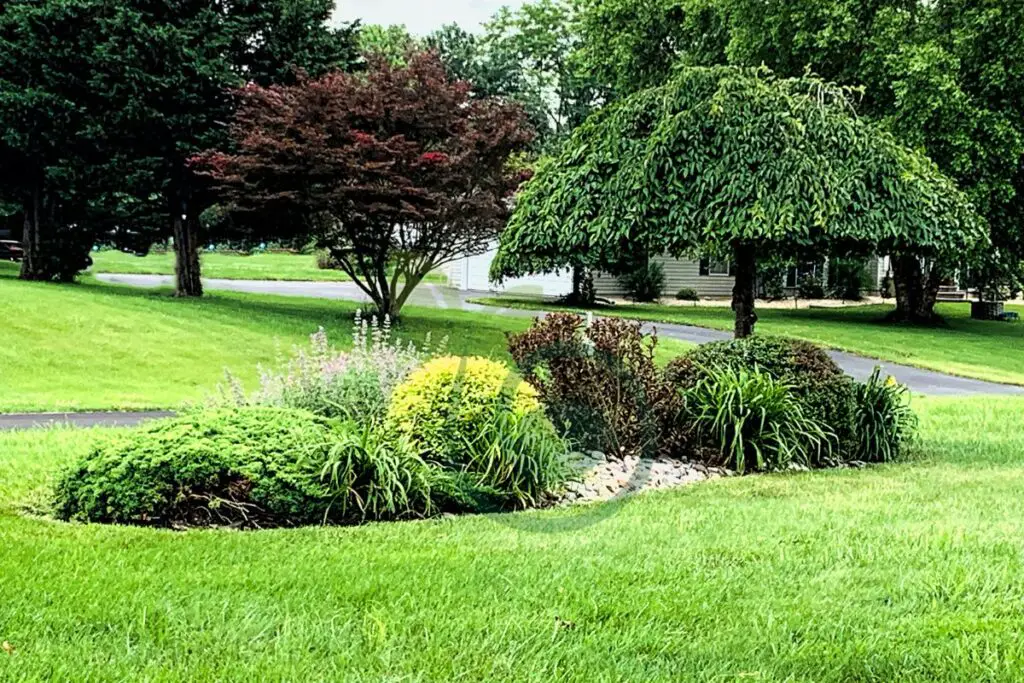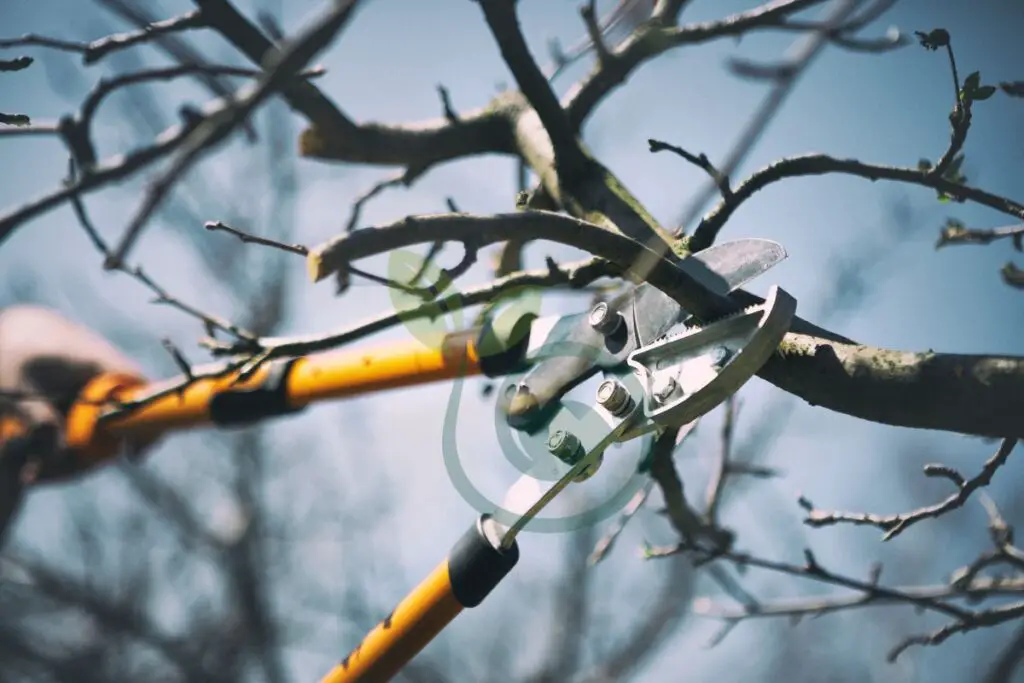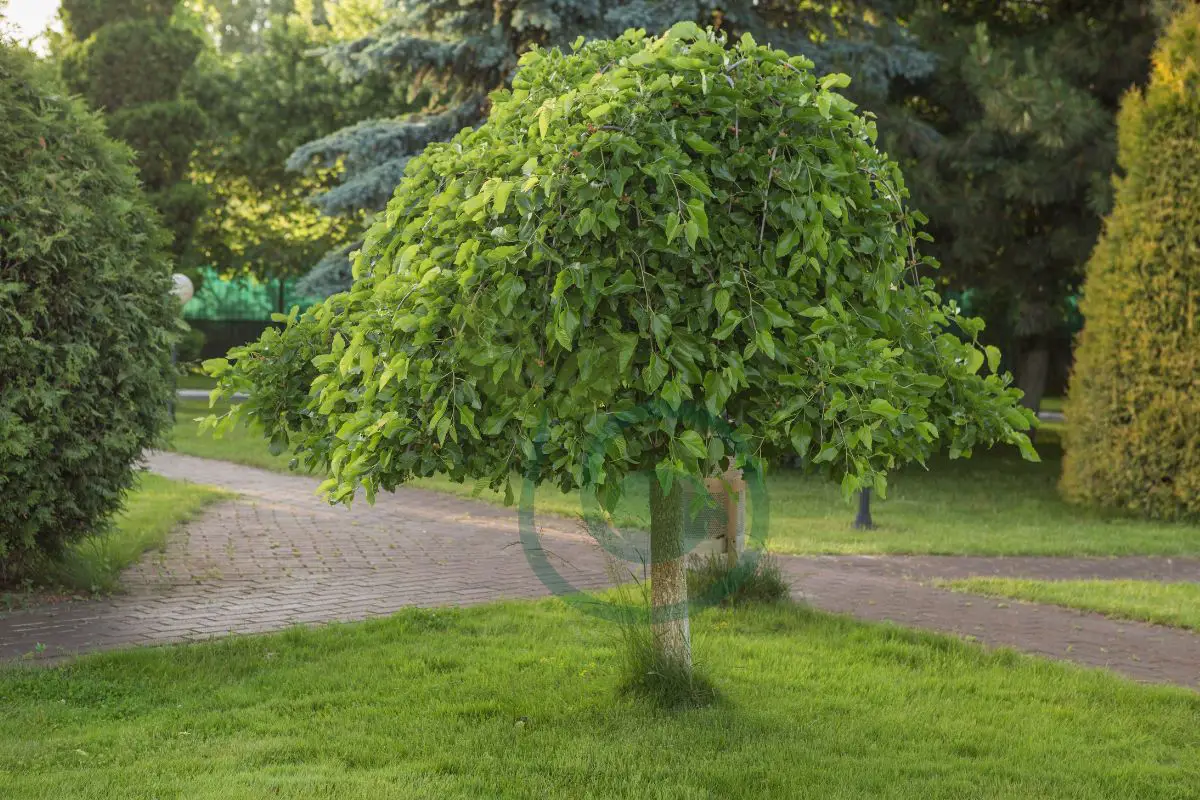Did you know that pruning your weeping mulberry tree at the wrong time can leave it vulnerable to diseases and stunted growth? Understanding the optimal timing for pruning dead branches is crucial to ensure your tree's health and vitality. By mastering the art of pruning at the right moment, you can promote robust foliage, enhance fruit production, and maintain an aesthetically pleasing canopy in your garden.
Key Takeaways
- Prune weeping mulberry trees in late winter or early spring to promote healthy growth and maintain their graceful appearance.
- Use proper pruning techniques such as removing dead or diseased branches, crossing branches, and shaping the canopy for optimal tree health.
- Regularly monitor the tree's growth to prevent overgrowth, and consider professional help for extensive pruning needs.
- Provide winter care by mulching around the base of the tree and protecting it from harsh weather conditions.
- Fertilize weeping mulberry trees in early spring with a balanced fertilizer to support their overall health and vigor.
- Effective pruning not only enhances the tree's aesthetics but also ensures longevity and disease prevention.
Understanding Weeping Mulberry Trees
Growth Habits
Weeping mulberry trees have a unique cascading growth habit, with branches that gracefully droop towards the ground. These trees typically grow to heights ranging from 15 to 20 feet, creating a picturesque silhouette in any landscape. The weeping form of these mulberries adds an elegant touch to gardens and yards.
The distinctive growth pattern of weeping mulberry trees makes them ideal for creating shaded areas or adding visual interest to outdoor spaces. Their arching branches provide natural shade, making them perfect for planting near patios or seating areas where you can enjoy their beauty up close. Their height and shape make them versatile for landscaping designs, whether as standalone specimens or incorporated into larger garden layouts.
Seasonal Changes
Throughout the year, weeping mulberry trees undergo striking seasonal changes in foliage color. In springtime, the leaves burst forth in vibrant shades of green, signaling the arrival of warmer weather and new growth. As summer transitions into fall, these leaves gradually shift from green to yellow hues before eventually dropping off during autumn. This colorful transformation adds visual appeal to your outdoor space as the seasons change.
The seasonal variations in foliage color exhibited by weeping mulberry trees offer a dynamic element to your landscape design. By strategically placing these trees within your garden or yard, you can create visually captivating scenes that evolve throughout the year. Whether you prefer the fresh greenery of spring or the golden tones of fall, incorporating weeping mulberries allows you to enjoy nature's changing palette right at home.
Importance of Pruning

Health Benefits
Pruning weeping mulberry trees is crucial for their overall health. It helps in eliminating dead or diseased branches, preventing the spread of diseases within the tree. By pruning regularly, you ensure proper air circulation and sunlight exposure to all parts of the tree, reducing the risk of fungal infections that thrive in damp and shaded areas. This practice promotes a healthier and more robust tree.
On top of health benefits, pruning also contributes to the aesthetic appeal of weeping mulberry trees. Their cascading branches create a graceful and striking visual effect in any landscape. Gardeners often use these trees as focal points due to their unique appearance and ability to enhance the beauty of gardens or water features. Proper pruning not only maintains their elegance but also ensures they remain visually appealing throughout the year.
Growth Control
Apart from health and aesthetics, pruning plays a vital role in controlling the growth of weeping mulberry trees. Through strategic trimming, you can manage the size and shape of these trees effectively. Preventing them from growing too large or unruly allows you to tailor their growth according to your landscaping needs. By controlling growth patterns through pruning, you can maintain a harmonious balance between nature's beauty and human intervention.
Best Time for Pruning
Ideal Seasons
Late winter or early spring stands out as the best time to prune weeping mulberry trees. This period sets the stage for healthy regrowth in the upcoming growing season. Avoid pruning during late summer or fall to steer clear of potential frost damage. Pruning during these seasons can be detrimental to the tree's overall health and growth.
When you prune your weeping mulberry tree at the right time, you give it a chance to flourish and thrive come springtime. Imagine giving your tree a fresh start each year by timing your pruning efforts effectively. By waiting until late winter or early spring, you're essentially setting up your tree for success in its growth cycle ahead.
Growth Cycles
Weeping mulberry trees follow annual growth cycles that influence when it's best to prune them. Understanding these cycles is crucial in determining the appropriate time for pruning activities. During their dormant period, typically in late winter, these trees are primed for vigorous regrowth after a good pruning session.
Pruning during this dormant phase encourages robust growth once the growing season kicks in again. It's like providing a reset button for your weeping mulberry tree, allowing it to shed old branches and focus its energy on new shoots and foliage development.
Pruning Techniques
Basic Cuts
Thinning, heading, and reduction cuts are fundamental when pruning weeping mulberry trees. Thinning cuts eliminate entire branches at their origin point for better tree health. Heading cuts trim branches to a specific length or bud to control growth.

For instance, thinning cuts help improve air circulation within the tree's canopy by removing crowded or crossing branches. On the other hand, heading cuts are useful in controlling the height and shape of the tree by encouraging new growth where needed.
Shaping Methods
Shaping techniques like crown reduction and selective pruning play a crucial role in maintaining weeping mulberry trees. Crown reduction involves decreasing the tree's overall size by selectively removing certain branches for improved aesthetics and structure. Selective pruning focuses on shaping the canopy to achieve a desired appearance while promoting healthy growth.
Crown reduction is beneficial when dealing with overgrown trees that may pose safety hazards due to proximity to buildings or power lines. Selective pruning allows gardeners to sculpt the tree according to their preferences without compromising its health and vitality.
Safety Measures
When it comes time for trimming your weeping mulberry trees, prioritizing safety is key. Always wear protective gear such as gloves and safety glasses to shield yourself from potential injuries caused by sharp tools or falling debris during pruning activities. Utilize clean and sharp pruning tools not only ensures precise cuts but also helps prevent unnecessary damage that can lead to disease entry points on the tree.
Remember always secure your working area before starting any trimming work on your weeping mulberry trees; this reduces risks associated with falling branches causing harm or accidents while you're busy tending to your garden.
Managing Overgrown Trees
Assessment
Before deciding when to prune weeping mulberry trees, it's crucial to assess their health and structure. Look for dead, damaged, or crossing branches that could harm the tree. Evaluate the shape of the tree; if corrective pruning is needed, plan accordingly.
To ensure a healthy growth environment for your weeping mulberry tree, start by removing any dead or diseased branches. These branches can attract pests and diseases that may harm the tree in the long run. Addressing crossing or rubbing branches will prevent potential damage and encourage optimal growth.

Step-by-Step Approach
When determining when to prune weeping mulberry trees, follow a step-by-step approach for effective results. Begin by identifying any dead or diseased branches that need removal. Next, focus on addressing crossing or rubbing branches to prevent future issues like branch breakage due to friction.
After dealing with diseased and crossing branches, selectively prune your weeping mulberry tree to maintain its natural form while shaping it aesthetically pleasingly. By taking this approach step by step, you ensure that each action contributes positively towards enhancing the overall health and appearance of your tree.
Maintenance Tips
For maintaining healthy weeping mulberry trees post-pruning sessions: regularly inspect them for signs of pests or diseases as prevention is always better than cure. Ensure proper watering during dry spells; deep watering promotes strong root development essential for overall plant health.
Applying organic mulch around the base of your weeping mulberry tree serves multiple benefits—it conserves moisture levels in the soil preventing dehydration stress on roots while simultaneously suppressing weed growth that competes with your desired plants.
Winter Care Essentials
Protection Methods
Taking care of weeping mulberry trees during winter is crucial to ensure their health and growth. Protecting newly pruned trees from extreme weather conditions is essential for their survival. For instance, wrapping young trees with burlap during the winter months can shield them from frost damage. Installing tree guards around the trunk helps prevent animals or mechanical injuries that could harm the tree.
To maintain the well-being of your weeping mulberry trees, it's important to consider these protective measures as part of your winter care routine.
Pruning Tips
Pruning plays a significant role in shaping and maintaining the health of weeping mulberry trees. When deciding when to prune these trees, using clean and sharp pruning tools is vital for making precise cuts that do not damage the tree. It's recommended to make cuts just outside the branch collar, which aids in proper healing and reduces the risk of infections.
Moreover, it's crucial not to remove more than 25% of the tree's foliage during a single pruning session. This practice ensures that you don't stress the tree excessively and allows it to recover effectively after pruning sessions.
Fertilizing for Health
Best Practices
To maintain the health and appearance of weeping mulberry trees, it is crucial to follow proper pruning techniques. Regularly sanitizing pruning tools helps prevent the spread of diseases among trees. When facing complex pruning tasks or unsure about specific techniques, consulting a professional arborist is advisable.
Prune weeping mulberry trees during late winter or early spring before new growth emerges. Avoid pruning during periods of extreme heat or cold as this can stress the tree. Throughout the growing season, monitor the tree's growth regularly and prune as needed to promote healthy development.
Timing
Pruning in late winter or early spring allows for optimal healing before new growth starts. This timeframe aligns with the dormant period when sap flow is minimal, reducing stress on the tree during pruning activities. Pruning in these seasons also helps shape the tree's structure while promoting vigorous growth come springtime.
Routine monitoring enables you to identify diseased, damaged, or crossing branches promptly for removal. By addressing these issues promptly through pruning, you prevent further damage and encourage overall tree health. Regular maintenance pruning throughout the growing season ensures that your weeping mulberry remains structurally sound and aesthetically pleasing.
Tips for Effective Pruning
Tool Selection
When to prune weeping mulberry trees depends on selecting the right tools. Hand pruners, loppers, and pruning saws are essential. Choose tools based on branch size. Ensure they are clean, sharp, and in good condition for effective pruning.
Using appropriate tools is crucial when deciding when to prune weeping mulberry trees. Hand pruners work well for small branches, while loppers handle thicker ones. A pruning saw is ideal for large branches that hand pruners cannot manage efficiently.
Technique Refinement
Refine your pruning techniques over time through practice and observation of weeping mulberry trees' natural growth patterns. Identifying these patterns helps shape the tree effectively by promoting healthy growth.
Learning how a weeping mulberry tree naturally grows aids in determining where and when to prune effectively. Observing how the tree responds to different pruning methods allows you to refine your techniques accordingly.
The Appeal of Weeping Mulberry
The Appeal of Weeping Mulberry
Weeping mulberry trees are prized for their landscape value. These trees serve as a captivating focal point in any garden or yard. Their distinct drooping branches and unique form add an element of visual interest, bringing a touch of tranquility to the surroundings. Planting weeping mulberries strategically can enhance the beauty of garden beds, pathways, or seating areas, creating a picturesque setting that invites relaxation and contemplation.
On top of their aesthetic appeal, weeping mulberry trees boast several unique features that make them stand out in landscaping. One notable characteristic is their production of small edible fruits, which not only add charm but also attract wildlife like birds and squirrels. Some varieties exhibit leaves with intriguing lobed or serrated shapes, further contributing to their ornamental value. Once established, these trees require minimal upkeep, making them an excellent choice for various landscapes where low-maintenance greenery is desired.
Final Remarks
You've now mastered the art of pruning weeping mulberry trees like a pro. Remember, healthy pruning leads to healthier trees. So, grab those shears and get to work! Don't forget, the best time to prune is in late winter or early spring before new growth emerges. Keep those trees in check and watch them flourish.
Now that you're equipped with all the knowledge needed to care for your weeping mulberry trees, go ahead and give them the TLC they deserve. A well-pruned tree not only looks better but also thrives better. So, roll up your sleeves and show those trees some love!
Frequently Asked Questions
When is the best time to prune weeping mulberry trees?
The best time to prune weeping mulberry trees is during late winter or early spring, while the tree is still dormant. Avoid pruning in fall as it can make the tree vulnerable to winter damage.
How do I effectively prune a weeping mulberry tree?
To effectively prune a weeping mulberry tree, start by removing dead or damaged branches. Then, focus on shaping the canopy by selectively trimming branches. Always use sharp tools and make clean cuts close to the branch collar without leaving stubs.
Why is pruning important for weeping mulberry trees?
Pruning is essential for maintaining the health and appearance of weeping mulberry trees. It helps promote new growth, improves air circulation within the canopy, removes diseased wood, and prevents overcrowding of branches.
What are some tips for managing overgrown weeping mulberry trees?
For overgrown weeping mulberry trees, consider gradual rejuvenation pruning over several years instead of drastic cutting all at once. Focus on thinning out crowded areas first before shaping the overall structure to avoid stressing the tree excessively.
Is fertilizing necessary for maintaining healthy weeping mulberries?
Fertilizing can help maintain healthy growth in weeping mulberries if done sparingly. Apply a balanced fertilizer in early spring before new growth begins but avoid excessive nitrogen that may lead to weak branching or excessive foliage at the expense of fruit production.
Image Source: Paid image from CANVA


